
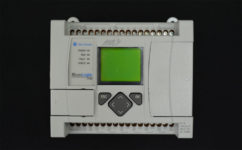 In 2005, eleven years after the original MicroLogix was released, and five years after the previous model launched, Rockwell introduced the MicroLogix 1100.
In 2005, eleven years after the original MicroLogix was released, and five years after the previous model launched, Rockwell introduced the MicroLogix 1100.
This new MicroLogix represented many firsts for the MicroLogix line, including Online Editing, Ethernet communications, and an LCD display built into the front of the unit.
The MicroLogix 1100 did come equipped with the same an 8 pin Mini-Din serial port (COMM 0) used on all previous MicroLogix models. However, it was upgraded to support both RS-232 and RS-485. The RS-485 connections replaced the pins that previously provided 24vdc power to accessories like the 1761-NET-AIC.
The 1100 was released in just one size: Sixteen Digital I/O points and Two 0-10vdc Analog Inputs of 10 bit resolution.
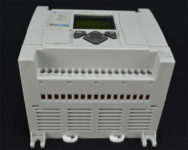 Like the MicroLogix 1200, the 1100 also supported 1762 expansion I/O modules. But in an effort to simplify things over the 1200, the 1100 was designed to support any four expansion modules no matter what their power consumption.
Like the MicroLogix 1200, the 1100 also supported 1762 expansion I/O modules. But in an effort to simplify things over the 1200, the 1100 was designed to support any four expansion modules no matter what their power consumption.
As with the MicroLogix 1000 and 1200, the MicroLogix 1100’s DC Input models supported either sinking or sourcing inputs. But unlike the MicroLogix 1200, the MicroLogix 1100 did not come with removable terminal blocks or wiring labels.
The DC input models also supported four high speed inputs which could be used individually, or together as one 20KHz high speed counter with multiple counting modes. The DC output models also included two high speed outputs which could be used for 20KHz PTOs, or in the case of the L16BBB as a 20KHz PWM output as well.

Being released five years after the 1200 allowed the 1100 to come with many additional features. The 1100 included a faster processor with support for 1ms STI’s, as well as 1ms Timers. And the 1100 also included an embedded real time clock.
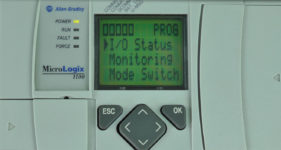 The addition of a LCD display allowed for two “digital” trim pots to replace the physical trim pots found on the 1200 and 1500. It also allowed the ability to monitor and change up to 48 integers and 48 bits.
The addition of a LCD display allowed for two “digital” trim pots to replace the physical trim pots found on the 1200 and 1500. It also allowed the ability to monitor and change up to 48 integers and 48 bits.
The embedded display also replaced many of the standard LED indicators found on other MicroLogix models. It was used to display the status of I/O points, as well as change the controllers “mode.” It was also used enable the DCOMM setting for channel 0, and to display controller settings like the Ethernet address. It even supported displaying of user defined messages using a new “LCD”instruction.
The built-in 10/100 Mbps Ethernet port supported Ethernet/IP Peer to Peer messaging (not implicit I/O connections,) as well as Boot-P and DHCP. It also sported a built-in webserver used to monitor system status or access data table addresses via pre-configured webpages.
And perhaps the least known feature of the MicroLogix 1100 was the included 128K memory chip which could be used with the DLG instruction for datalogging. 64K of the same memory could also be used with the RCP recipe instruction, greatly simplifying recipe management and coding.
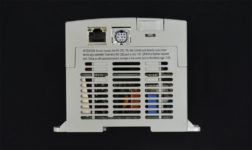 The 1100 was also programmed with the same Windows based RSLogix 500 software (version 7.0 or greater) that programmed the SLC-500, MicroLogix 1000, 1200, and 1500, but could not be programmed with the MicroLogix 1000’s Hand Held Programming Terminal.
The 1100 was also programmed with the same Windows based RSLogix 500 software (version 7.0 or greater) that programmed the SLC-500, MicroLogix 1000, 1200, and 1500, but could not be programmed with the MicroLogix 1000’s Hand Held Programming Terminal.
When it came to communication protocols, the MicroLogix 1100 included serial port support for DF1 Full Duplex, DF1 Half Duplex Master or Slave, DF1 Radio Modem, ASCII, DH-485, and Modbus RTU Master or Slave. To communicate via RS-485, in place of a 1761-NET-AIC module, the much smaller and less expensive 1763-NC01 could be used to tie into the embedded RS-485 communication pins.
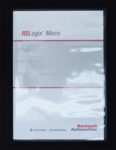 As Rockwell continued to expand it’s MicroLogix line, many customers began using the MicroLogix exclusively. However, new customers still had to buy the more expensive RSLogix 500 / SLC-500 programming software just to program the MicroLogix line. This became a sore point as that software was more expensive than many of the MicroLogix models themselves.
As Rockwell continued to expand it’s MicroLogix line, many customers began using the MicroLogix exclusively. However, new customers still had to buy the more expensive RSLogix 500 / SLC-500 programming software just to program the MicroLogix line. This became a sore point as that software was more expensive than many of the MicroLogix models themselves.
To address this, in 2008 Rockwell released a MicroLogix only version of RSLogix 500, RSLogix Micro Starter, for $129. This was a substantial savings over the cost of any version of RSLogix 500. Then a year later Rockwell released a free version of the same software for programming just the MicroLogix 1000 and 1100. It was named, “RSLogix Micro Strarter Lite.”
Today, after nearly 10 years and with newer CompactLogix products on the market, the low cost, small size, Ethernet port and online editing still make the MicroLogix 1100 a popular programmable controller for small systems.
If you would like to find out more about the MicroLogix 1100 you can visit the manufacturer’s product webpage HERE (no longer working – ed. 2023.)
Update 2023: on April 1, 2022, Rockwell obsoleted the MicroLogix 1100 line, however as of May 2023 the 1400 is still available.
Until next time, Peace ✌️
If you enjoyed this content, please give it a Like, and consider Sharing a link to it as that is the best way for us to grow our audience, which in turn allows us to produce more content 🙂
Shawn M Tierney
Technology Enthusiast & Content Creator
Support our work and gain access to hundreds members only articles and videos by becoming a member at The Automation Blog or on YouTube. You’ll also find all of my affordable PLC, HMI, and SCADA courses at TheAutomationSchool.com.
- FactoryTalk Design Workbench First Look, CCW Comparison - December 19, 2025
- Drew Allen of Grace Technologies on Automation, Safety, and More (P256) - December 17, 2025
- Robotics in Warehouse Automation with Erik Nieves of Plus One Robotics (P255) - December 10, 2025

Discover more from The Automation Blog
Subscribe to get the latest posts sent to your email.


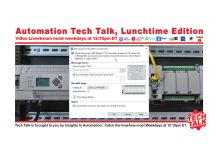
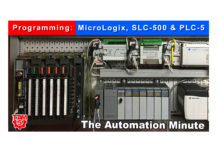
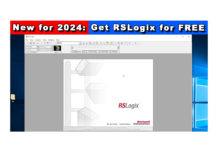
Panelview plus 600
I have lots of articles on the PanelView Plus 😀
Shawn